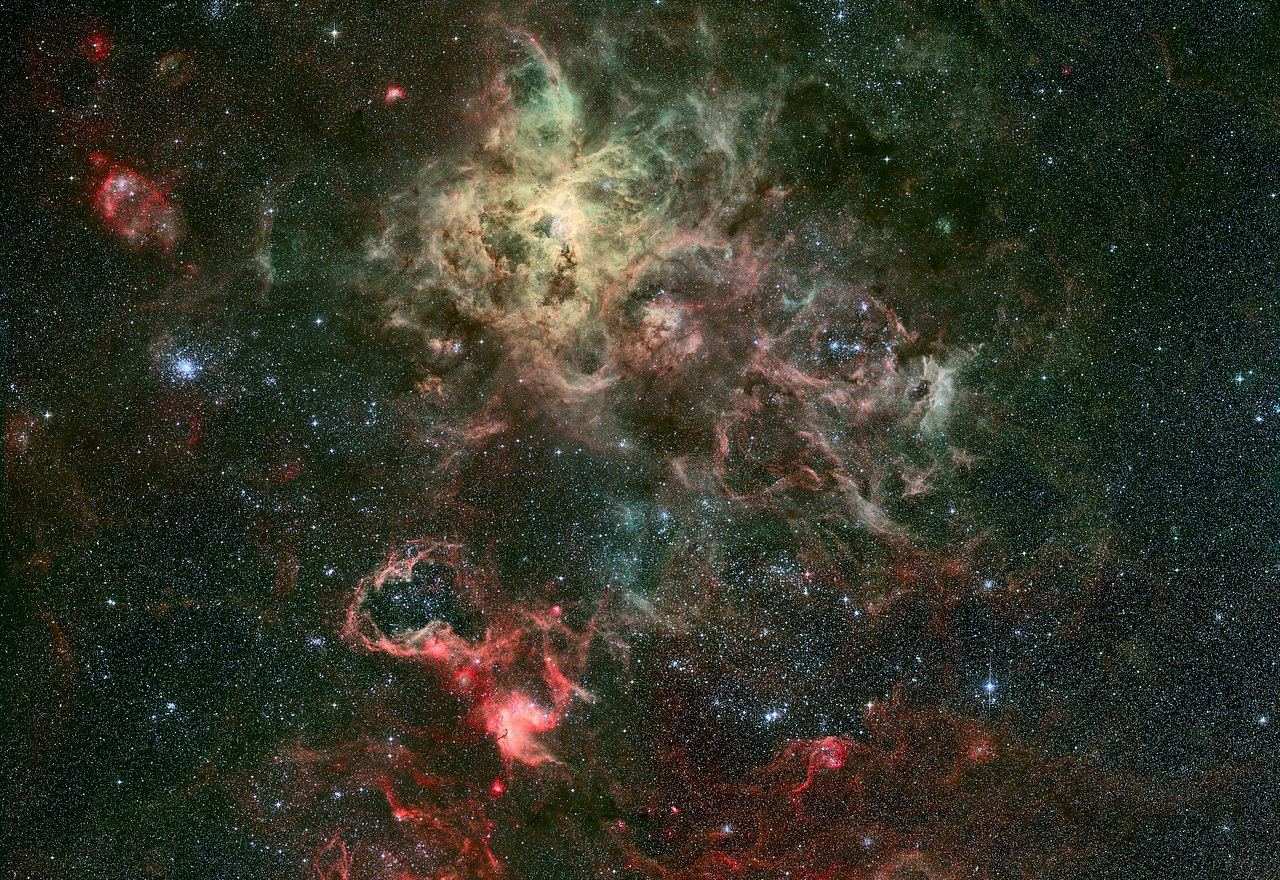The theory of Panspermia states that life exists through the cosmos, and is distributed between planets, stars and even galaxies by asteroids, comets, meteors and planetoids. In this respect, life began on Earth about 4 billion years ago after microorganisms hitching a ride on space rocks landed on the surface. Over the years, considerable research has been devoted towards demonstrating that the various aspects of this theory work.
The latest comes from the University of Edinburgh, where Professor Arjun Berera offers another possible method for the transport of life-bearing molecules. According to his
recent study
, space dust that periodically comes into contact with Earth's atmosphere could be what brought life to our world billions of years ago. If true, this same mechanism could be responsible for the distribution of life throughout the Universe.
For the sake of his study, which was recently published in
Astrobiology
under the title "
Space Dust Collisions as a Planetary Escape Mechanism
", Prof. Berera examined the possibility that space dust could facilitate the escape of particles from Earth's atmosphere. These include molecules that indicate the presence of life on Earth (aka. biosignatures), but also microbial life and molecules that are essential to life.
[caption id="attachment_78585" align="aligncenter" width="580"]
The theory of Panspermia states that life is distributed throughout the Universe by microbes traveling on objects between star system. Credit: NASA/Jenny Mottor
[/caption]
Fast-moving flows of interplanetary dust impact our atmosphere on a regular basis, at a rate of about
100,000
kg (110 tons) a day. This dust ranges in mass from 10
-18
to 1 gram, and can reach speeds of 10 to 70 km/s (6.21 to 43.49 mps). As a result, this dust is capable of impacting Earth with enough energy to knock molecules out of the atmosphere and into space.
These molecules would consist largely of those that are present in the thermosphere. At this level, those particles would consist largely of chemically disassociated elements, such as molecular nitrogen and oxygen. But even at this high altitude, larger particles - such as those that are capable of harboring bacteria or organic molecules - have also been known to exist. As Dr. Berera states in his study:
Of course, the process of molecules escaping our atmosphere presents certain difficulties. For starters, it requires that there be enough upward force that can accelerate these particles to escape velocity speeds. Second, if these particle are accelerated from too low an altitude (i.e. in the stratosphere or below), the atmospheric density will be high enough to create drag forces that will slow the upward-moving particles.
[caption id="attachment_122361" align="aligncenter" width="580"]
Photo of an aurora taken by astronaut Doug Wheelock from the International Space Station on July 25th, 2010. Credit: Image Science & Analysis Laboratory, NASA Johnson Space Center
[/caption]
In addition, as a result of their fast upward travel, these particle would undergo immense heating to the point of evaporation. So while wind, lighting, volcanoes, etc. would be capable of imparting huge forces at lower altitudes, they would not be able to accelerate intact particles to the point where they could achieve escape velocity. On the other hand, in the upper part of the mesosphere and thermosphere, particles would not suffer much drag or heating.
As such, Berera concludes that only atoms and molecules that are already found in the higher atmosphere could be propelled into space by space dust collisions. The mechanism for propelling them there would likely consist of a double state approach, whereby they are first hurled into the lower thermosphere or higher by some mechanism and then propelled even harder by fast space dust collision.
After calculating the speed at which space dust impacts our atmosphere, Berera determined that molecules that exist at an altitude of 150 km (93 mi) or higher above Earth's surface would be knocked beyond the limit of Earth's gravity. These molecules would then be in near-Earth space, where they could be picked up by passing objects such as comets, asteroid or other Near-Earth Objects (NEO) and carried to other planets.
Naturally, this raises another all-important question, which is whether or not these organisms could survive in space. But as Berera notes, previous studies have borne out the ability of microbes to survive in space:
[caption id="attachment_123083" align="aligncenter" width="580"]
The tiny Tardigrade (aka. "water bear"), which could be the toughest creature on Earth. Credit: Katexic Publications, unaltered, CC2.0)
[/caption]
Another thing Berera considers is the strange case of tardigrades, the eight-legged micro-animals that are also known as "water bears". Previous experiments have shown that this species is capable of surviving in space, being both strongly resistant to radiation and desiccation. So it is possible that such organisms, if they were knocked out of Earth's upper atmosphere, could survive long enough to hitch a ride to another planet
In the end, these finding suggests that large asteroid impacts may not be the only mechanism responsible for life being transferred between planets, which is what proponents of Panspermia previously thought. As Berera stated in a University of Edinburgh
press statement
:
In addition to offering a fresh take on Panspermia, Berera's study is also significant when it comes to the study of how life evolved on Earth. If biological molecules and bacteria have been escaping Earth's atmosphere continuously over the course of its existence, then this would suggest that it could still be floating out in the Solar System, possibly within comets and asteroids.
These biological samples, if they could be accessed and studied, would serve as a timeline for the evolution of microbial life on Earth. It's also possible that Earth-borne bacteria survive today on other planets, possibly on Mars or other bodies where they locked away in permafrost or ice. These colonies would basically be time capsules, containing preserved life that could date back billions of years.
Further Reading: University of Edinburgh, Astrobiology
 Universe Today
Universe Today
